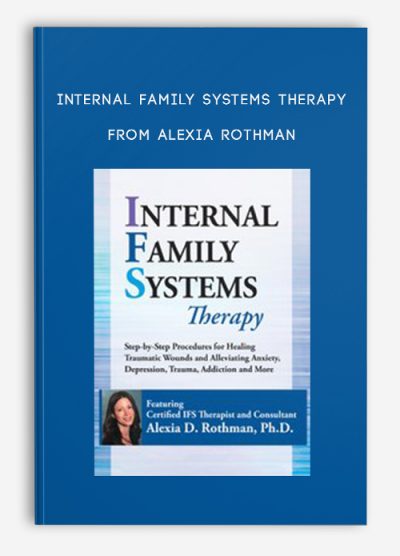 Internal Family Systems Therapy from Alexia Rothman
Internal Family Systems Therapy from Alexia Rothman
More information about Medical:
Medicine is the science and practice of establishing the diagnosis, prognosis, treatment, and prevention of disease.
Medicine encompasses a variety of health care practices evolved to maintain and restore health by the prevention and treatment of illness.
Contemporary medicine applies biomedical sciences, biomedical research, genetics, and medical technology to diagnose, treat, and prevent injury and disease,
typically through pharmaceuticals or surgery, but also through therapies as diverse as psychotherapy, external splints and traction, medical devices, biologics, and ionizing radiation, amongst others.
Medicine has been around for thousands of years, during most of which it was an art (an area of skill and knowledge) frequently having connections to the religious and
philosophical beliefs of local culture. For example, a medicine man would apply herbs and say prayers for healing, or an ancient philosopher and physician would apply bloodletting according to the theories of humorism.
In recent centuries, since the advent of modern science, most medicine has become a combination of art and science (both basic and applied, under the umbrella of medical science).
While stitching technique for sutures is an art learned through practice, the knowledge of what happens at the cellular and molecular level in the tissues being stitched arises through science.
Outline:
Internal Family Systems (IFS)
- Comprehensive, compassionate, non-pathologizing treatment approach
- Paradigm-shifting perspective on “psychopathology”
- Easily integrated into other therapeutic modalities
- Teach clients to access inner wisdom and self-compassion to permanently heal traumatic wounds
Evolution of the Model
- Development of the IFS model by Richard C. Schwartz, Ph.D.
- IFS as an empirically validated treatment: Summary of research support
Composition of the Psyche
- Concept of multiplicity: “We are all multiple personalities.”
- Components of the psyche:
- Wounded, vulnerable, parts
- Protective parts: proactive and reactive
- Burdens: Negative beliefs about oneself
- The Self: compassionate inner leader and internal source of wisdom and healing energy
- Guide clients to access their own inner wisdom and healing potential
- IFS-specific techniques for in-the-moment emotion regulation, helpful even with panic, flashbacks, and dissociation
The IFS Model
- Assumptions of the model
- Goals of IFS therapy
- Flow of the IFS model over the course of treatment
- Flow of an individual IFS session
Case conceptualization in IFS
- Diversity and cultural sensitivity
- How IFS understands Personality Disorders, Dissociative Identity Disorder, and Addiction
IFS Step-by-Step
Step 1: Using Meditative Processes to Identify and Connect with a Target Part
- Differentiate the person from the symptom
- Access a state of compassion and curiosity essential for healing
- Establish a relationship with the target part
- Learn the history and benevolent intention behind the symptom
Step 2: Working with Protective Parts
- Facilitate internal attachment work
- Learn and address the fears/concerns of protective parts
- Establish a trusting and appreciative relationship with proactive and reactive protectors
- Gain permission to proceed to healing
Step 3: Healing the Traumatic Wound
- Develop a compassionate, connected relationship with the wounded part
- Witness the pain rather than re-experience it: Learn to be “with”, not “in”, to avoid re-traumatization
- Retrieve the wounded part from “trauma time”
- Release/unburden thoughts, feelings, and beliefs
- Integrate change into the system and use maintenance and troubleshooting strategies
Bringing IFS Concepts to Life
- Experiential exercise
- Video demonstration of IFS therapy with a real client
- Step-by-step commentary to solidify understanding of techniques illustrated in the video session
Description:
After decades of clinical innovation and recent scientific research, the empirically validated Internal Family Systems (IFS) model has been shown to be effective at improving clients’ general functioning and well-being. This effective model provides clinicians with procedures for helping clients with the most challenging mental health profiles to heal the wounded, burdened, and traumatized parts of their systems.
The IFS model provides a compassionate, respectful, non-pathologizing approach to understanding the organization and functioning of the human psyche.
The transformative IFS approach embraces and celebrates the natural multiplicity of the mind. Its assumption that every part of the system has good intention and valuable resources allows clinicians to approach even the most troubling of “symptoms” with compassion and respect. IFS offers therapists a powerful and effective set of tools for empowering clients with a wide range of clinical profiles to heal the wounded and burdened parts of their internal systems, resulting in:
- A way to enter clients’ inner ecology without the overemphasis on containment and stabilization
- Symptom reduction and improved functioning for clients
- Deep self-healing within even the most troubled clients
IFS is a powerful treatment modality. Once you experience it, you will want to incorporate it into your practice.
Through instruction, video demonstration, and experiential exercises, Alexia D. Rothman, Ph.D., Certified IFS therapist and college of Dr. Richard Schwartz (founder of IFS) will show you step-by-step how to apply the most effective, empirically validated IFS interventions to help your clients connect with and understand their conflicting parts to facilitate deep, lasting healing.













tristian –
This is Digital Download service, the course is available at Coursecui.com and Email download delivery.